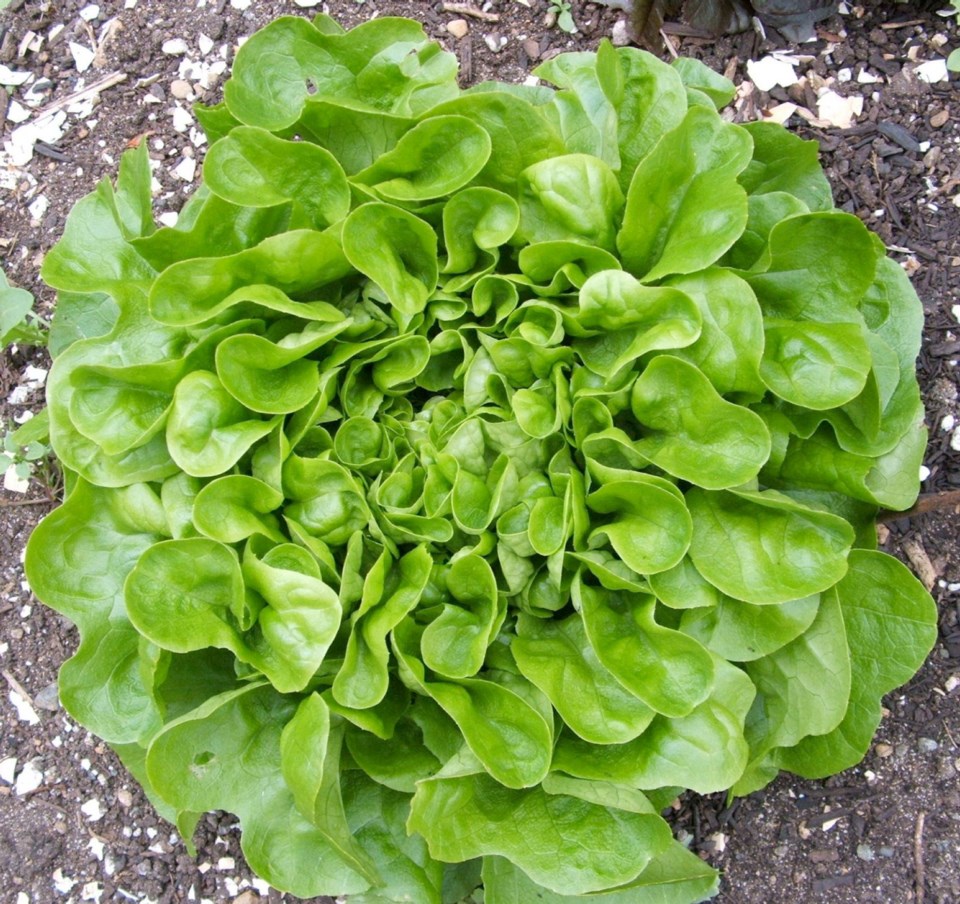I recognized the big, blossom-like heads of lettuce right away as they appeared on a grower’s table last month at my local farmers’ market. I had grown those same, very distinctive lettuces myself during the spring and summer.
The grower confirmed that the red and green butterheads were from the “Salanova” group of lettuces listed in the catalogue from Johnny’s Selected Seeds (JSS). The Home Garden Mix, the type I chose to grow, contains four varieties — green and red versions of both butter head and oakleaf lettuces. Another Salanova blend comprises four leaf lettuces with frilled and incised leaves, also in both green and red.
Lettuces and lettuce blends are something of a specialty of this much-admired seed source. JSS is an employee-owned company that Robert Johnston Jr., then 22, started up in 1973, using his savings of $500. Now the company is co-owned by 200 employees.
Over the years JSS has established a team of plant breeders that has produced award-winning vegetable varieties like the wonderful sweet pepper called Carmen, named after the opera. Joining Carmen as a 2016 All-America Selections (AAS) award winner is Escamillo (a bull-fighter in the opera, and Carmen’s love), a yellow companion for the bright red Carmen.
Another AAS award-winning pepper from the JSS breeding program this year is Cornito Gallo, an attractive, smaller version of Escamillo. All these peppers have the elongated shape of bull’s horn peppers.
I find the JSS pages — and pages — of lettuces irresistible. For small space and container gardens there are numerous miniature varieties that include several red, green and bronzed compact romaine lettuces. For something new this year I’ll be growing Fusion, a romaine and greenleaf lettuce cross with an upright, romaine-like growth of wavy, dark green leaves. Oscarde is a deep cherry red oakleaf lettuce from France.
When it first appeared a few years ago in the JSS catalgoue, the blue-black and red tomato called Indigo Rose caught my attention. I and visitors to my garden have appreciated the attractiveness and fine flavour of these small tomatoes ever since.
This year, JSS lists Indigo Cherry Drops, described as an improved Indigo Rose with a more vigorous vining habit, larger fruit clusters and better yields, and improved flavour.
The JSS catalogue is where I first found Pistou, a dwarf, dome-shaped, small-leaved basil ideal for growing as a delightful little, fragrant “hedge” in window boxes and window-box shaped planters. Pistou is now listed in other catalogues (Veseys, Richters).
I see in the JSS and other 2016 catalogues that another fine-leaf, aromatic Greek basil has replaced Pistou. Pluto is neat, uniform and compact at 20 centimetres high. William Dam Seeds, another source, describes Pluto as “the most dwarf and smallest leaf variety in our trials. Stays compact in containers and the garden to form a ball-shaped plant. Great for growing indoors in pots.”
The tiny leaves and small plant size do not signify a corresponding diminution of flavour. In fact, this is the sort of basil favoured in Italy for the making of pesto.
There are an amazing eight pages of pumpkin listings. Nine of the varieties are products of JSS breeding. Among them is the AAS award winner Baby Bear.
My best pumpkin last year was Cinnamon Girl, one of the varieties developed by JSS. The flesh was thick, tender, sweet, and deliciously aromatic. It made a superb Christmas dinner pumpkin pie. Unfortunately, the 2016 catalogue notes that no seed is available for this year. I’ll be watching next year for its return.
Meanwhile, I see that another JSS-bred listing called Racer, also a manageably medium-sized pumpkin, is highlighted in yellow — a signal to catalogue viewers that the variety is especially easy to grow. The plants are described as “highly productive, vigorous, short vines.” Johnnyseeds.com
Don’t waste the seeds. Whenever I cut a pumpkin up for steaming and using in a pie, pudding or casserole, I carefully ferret out all the seeds, spread them on a broad, ungreased pie plate and sprinkle them liberally with freshly ground salt. As they roast in an oven (around 300 F) I stir them around a few times and, as they dry, begin to taste them. It doesn’t take long for the seeds to reach a peak of crunchy, full-flavoured perfection.
They’re so good I usually finish up seeds from a whole pumpkin in a couple of days. By that time, I’d say I was roughage replete.



